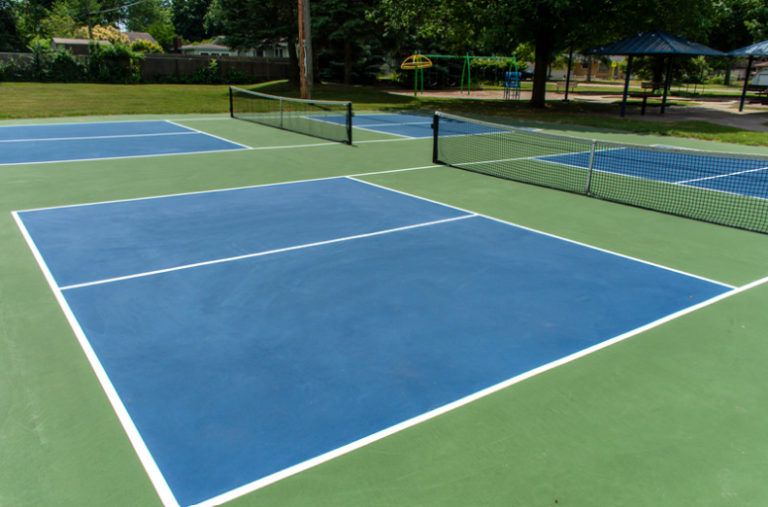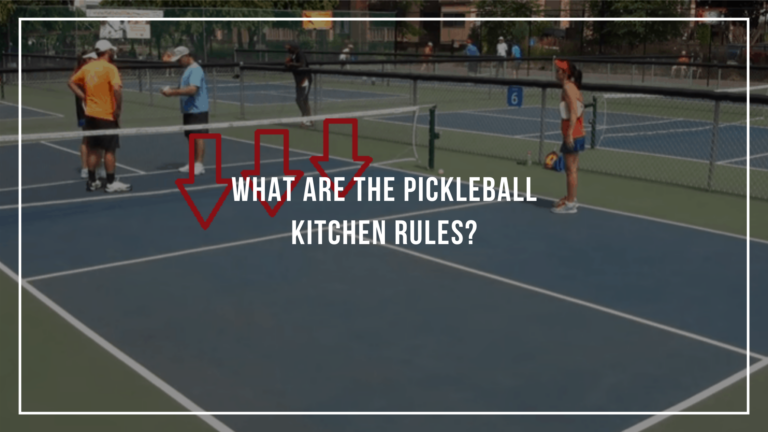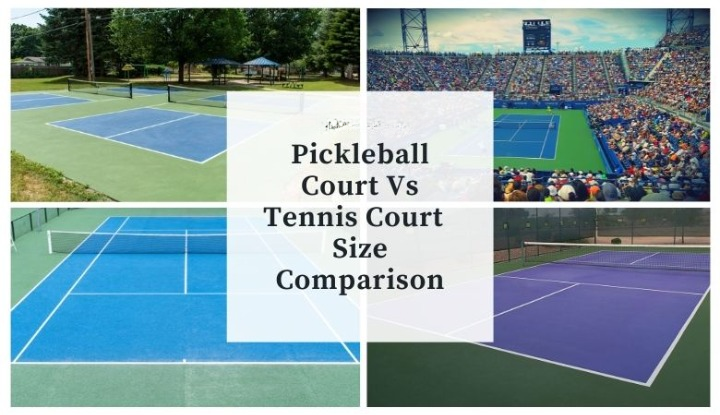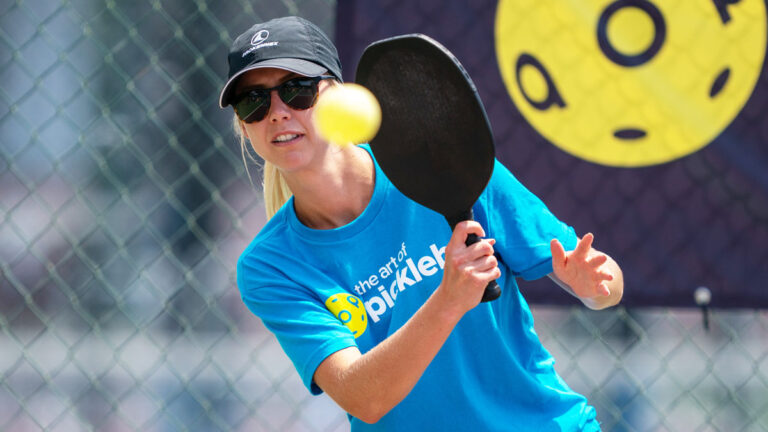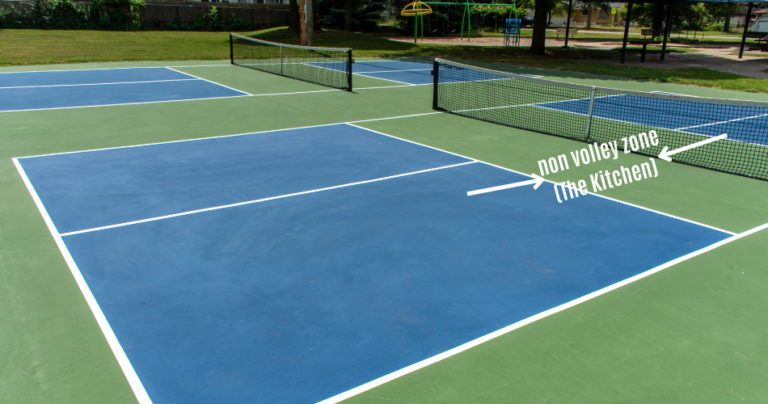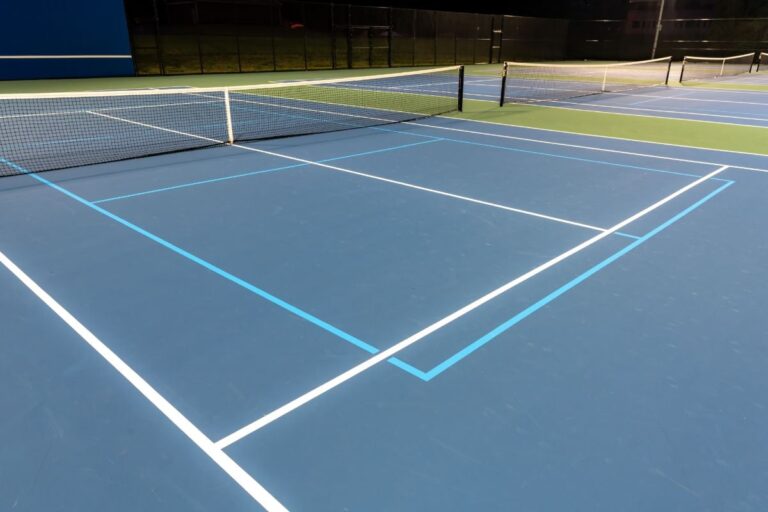Pickleball Skinny Singles Rules (2024 How to Guide)
Are you curious about the rules and strategies of Pickleball Skinny Singles?
I am a former coach and athlete delving into the world of pickleball, and I have gathered valuable insights to help beginners navigate this exciting sport.
From court size to equipment requirements, serving techniques to scoring rules, this article covers everything you need to know to excel in Skinny Singles.
Explore the differences between Skinny Singles and Regular Singles and discover the key strategies for success in this fast-paced game.
Key Takeaways:
- Skinny Singles follows the same basic rules as regular singles, with a few key differences.
- A smaller court, different serving rules, and altered scoring make Pickleball Skinny Singles a unique variation of the sport.
- Proper positioning and strategic play are crucial for success in Pickleball Skinny Singles.
What is Pickleball?
Pickleball is a unique sport that combines elements of tennis, badminton, and table tennis. It can be played as a doubles game or a singles game on a court that is smaller than a standard tennis court, making it suitable for all skill levels and ages.
Originating in the mid-1960s on Bainbridge Island, Washington, pickleball was created as a family-friendly game that could be enjoyed by people of all ages. The sport gained popularity rapidly due to its easy-to-learn rules and the fun, social atmosphere it fosters.
The equipment used in pickleball includes a paddle, which is larger than a ping pong paddle but smaller than a tennis racket, and a plastic ball with small holes, somewhat similar to a wiffle ball. These unique characteristics give pickleball its distinctive gameplay.
What are the Rules of Pickleball Skinny Singles?
In Skinny Singles, players must adhere to specific rules, such as the kitchen rules that govern the non-volley zone and shot placement. These rules are outlined in the official pickleball skinny singles guidelines, including regulations for service areas and court dimensions.
One critical aspect of playing Pickleball Skinny Singles is understanding the significance of the non-volley zone, commonly referred to as ‘the kitchen.’ As per the regulations, players are not allowed to volley the ball while standing inside this designated area, forcing strategic maneuvering and placement of shots.
Shot placement plays a vital role in this game, as players need to tactically position their shots to outmaneuver opponents and exploit openings on the court. Proper shot placement can make a significant difference in gaining the upper hand during rallies.
Service rules are another key element in Pickleball Skinny Singles, dictating where and how a player must serve the ball. These rules ensure fair play and maintain the competitive balance between the players, adding to the complexity and challenge of the game.
The court design in this variation of pickleball is structured to enhance the strategic gameplay. With a narrow court width, players are required to be precise in their shots and placements, promoting skillful and calculated moves over power plays.
What is the Court Size for Pickleball Skinny Singles?
The court size for Skinny Singles is narrower than a standard pickleball court, providing players with limited space to maneuver and placing a premium on precise shot placement and strategic movement.
Measuring approximately 34 feet long and 17 feet wide, a Skinny Singles Pickleball Court is specifically designed to challenge players with its compact dimensions.
The reduced width requires players to refine their accuracy and control as they aim for the boundaries, enhancing their ability to strategically place shots with precision.
With such limited space available, players must be agile and strategic in their movements on the court, continuously adapting their positioning to create opportunities for effective shot selection and court coverage.
What Equipment is Needed for Pickleball Skinny Singles?
To play Pickleball Skinny Singles, players need standard pickleball equipment such as paddles, balls, and appropriate footwear. Understanding the dimensions of a Skinny Singles Pickleball Court is crucial to adapt gameplay and movement.
Regarding paddles, players often opt for a lighter weight and a smaller surface area to enhance control and agility on the court. The balls used in Skinny Singles are usually indoor balls, offering better bounce and control. It is important to invest in court footwear that provides good grip and support for quick lateral movements unique to Skinny Singles play.
How Many Players Are Needed for Pickleball Skinny Singles?
Skinny Singles requires only two players to participate, unlike doubles play where four players are on the court. Each player competes individually, aiming to outmaneuver their opponent on the opponent’s half of the court.
The game demands not only physical agility but also strategic thinking, as players must anticipate their opponent’s moves and quickly react to changing game dynamics. Positioning on the court becomes crucial in Skinny Singles, with players needing to cover the full court efficiently while still maintaining a strong offensive and defensive stance.
How to Serve in Pickleball Skinny Singles?
Serving in Skinny Singles requires precision and strategy. The serving player must aim for a strong serve that lands deep in the opponent’s court, creating opportunities to gain an advantage in the rally.
A well-executed serve not only puts pressure on your opponent right from the start, but it also allows you to dictate the pace and direction of the point. By sending your serve deep into the court, you force your opponent to hit the ball on the move, limiting their options and increasing the chances of a weaker return. This sets you up for a stronger position to follow up with an aggressive shot, potentially gaining control of the rally early on.
What are the Different Types of Serves in Pickleball Skinny Singles?
In Skinny Singles, players can utilize various serve types to control the pace and direction of the game. These include the third shot drop, deep returns, and strategic shot placements to outsmart opponents.
Serving in Skinny Singles can be a game-changer, setting the tone from the very start. The third shot drop, a common and effective serve, is often used to maintain control of the kitchen line. Deep returns, on the other hand, can catch opponents off guard, forcing them to retreat and giving you the upper hand in rallies. Strategic shot placements, such as aiming for the sidelines or hitting the ball at an angle, can create openings and put pressure on your opponent.
What Happens if a Serve is Faulted in Pickleball Skinny Singles?
If a serve is faulted in Skinny Singles, the serving player loses the point, and the serve is handed over to the receiving team. The two-bounce rule applies, requiring the ball to bounce once on each side before players can play it in this variation.
As the serving player commits a fault, not only do they lose the opportunity to score a point, but they also hand over the serving advantage to the opposing team. This shift in possession can be crucial in a game where every point matters. The strict two-bounce rule adds an extra layer of strategy. Players must anticipate how the ball will bounce on their side and position themselves strategically to capitalize on the restrictions imposed by the rule.
How to Play a Point in Pickleball Skinny Singles?
 Playing a point in Skinny Singles involves engaging in strategic rallies and shot selection to outmaneuver the opponent. Players must aim to control the pace of the game and dominate the opponent’s half of the court.
Playing a point in Skinny Singles involves engaging in strategic rallies and shot selection to outmaneuver the opponent. Players must aim to control the pace of the game and dominate the opponent’s half of the court.
Success in Skinny Singles hinges on players’ ability to read the game, anticipate their opponent’s moves, and swiftly adjust their positioning on the court. By selecting the right shots at the right moments, players can not only apply pressure but also create opportunities to dictate the flow of the game. Understanding the geometry of the court and the optimal placement of shots is crucial in setting up effective plays and forcing errors from the opponent. This blend of finesse, power, and tactical acumen defines the dynamic nature of playing Skinny Singles, where every move is a calculated step towards victory.
What are the Rules for Hitting the Ball in Pickleball Skinny Singles?
In Skinny Singles, players must adhere to specific rules for hitting the ball, including precise ball placement to exploit opponent’s angles and strategic shot placement. Understanding these rules is essential for effective gameplay.
Players in Pickleball Skinny Singles must not only focus on hitting the ball within bounds but also on the importance of shot angles and the strategic placement of their shots. By carefully considering the court’s dimensions and their opponent’s positioning, players can strategically dictate the flow of the game. Being mindful of court awareness and shot selection can be the difference between winning and losing crucial points. It’s not just about hitting the ball; it’s about outsmarting your opponent with well-thought-out placement and strategic decision-making.
What Happens if the Ball Hits the Net in Pickleball Skinny Singles?
If the ball hits the net during a rally in Skinny Singles, the point continues, and an odd score may result. Players must adapt to these situations and adjust their gameplay to maintain control and capitalize on opportunities.
When the ball grazes the net in the heat of a competitive match, it can disrupt the rhythm and trajectory of play, throwing off the players’ strategic plans.
To react swiftly, players need to stay composed and be ready to respond to the altered dynamics on the court. This unexpected event often demands quick thinking and agile footwork to recover smoothly from the disrupted play.
By keeping a cool head and staying focused, players can turn such interruptions into opportunities for strategic maneuvering and outsmarting their opponents.
What are the Rules for Scoring in Pickleball Skinny Singles?
The scoring system in Skinny Singles follows specific rules, with points being awarded on the odd side of the court. Understanding the scoring system and its nuances helps players track their progress and stay competitive.
In Skinny Singles, points are awarded on the odd side of the court, which adds an extra layer of strategy to the game. When serving, players have the opportunity to gain points only when they are on the odd side of the court. This means that players must strategically aim to win points while they are positioned on the right side of the court to maximize their scoring potential. Knowing when to be aggressive and when to play tactically can make a significant difference in accumulating points effectively during matches.
What are the Strategies for Playing Pickleball Skinny Singles?

Mastering strategies for Pickleball Skinny Singles is crucial for success on the court. Players must focus on strategic play, precise shot selection, and exploiting opponent’s angles to gain a competitive edge in matches.
One effective strategy in Pickleball Skinny Singles involves understanding the importance of court positioning. By being aware of where you are on the court and your distance from the net, players can better anticipate their opponent’s moves and react swiftly. Players should aim to control the centerline to limit their opponent’s angles of attack.
Another key aspect of strategic play is the ability to vary shot choices. By mixing up shots such as dinks, drops, lobs, and drives, players can keep their opponents off balance and create opportunities to dictate the pace of the game.
Adaptability is also crucial in Pickleball Skinny Singles as players must be able to adjust their game plan based on their opponent’s strengths and weaknesses. By staying flexible and open to changing tactics mid-match, players can outsmart their opponents and maintain control of the game.
How to Position Yourself on the Court in Pickleball Skinny Singles?
Positioning yourself correctly on the court in Skinny Singles is essential for maintaining control and executing effective shots. Understanding the opponent’s half and the strategic advantages of different court sides can enhance your gameplay.
By strategically positioning yourself near the kitchen line, you can cut off your opponent’s angles and force them into difficult shots. Being close to the kitchen allows for quick volley exchanges and puts pressure on the opponent.
On the other hand, standing deeper in the court gives you a better vantage point and more time to react to shots, especially lobs or deep returns. Adapting your position based on the situation is crucial in dictating the rhythm of the game and seizing control.
What are Some Tips for Winning in Skinny Singles?
To secure victories in Skinny Singles, players can benefit from strategic tips and recommendations. Choosing the right shot options, exploiting opponent’s weaknesses, and dominating the opponent’s half of the court are key strategies for success.
One crucial aspect that players should focus on is shot selection. Ensuring that each shot is intentional and well-placed can make a significant difference in the outcome of the match.
Additionally, strategic decision-making plays a vital role in staying ahead of the competition. Anticipating your opponent’s moves and adapting your game plan accordingly can give you a competitive edge on the court.
Incorporating tactical maneuvers such as drop shots, lobs, and volleys can keep your opponent off balance and allow you to dictate the pace of the game. By mastering these elements, players can elevate their performance and increase their chances of winning matches.
Summary
Skinny Singles offers a unique and challenging variation of the sport, emphasizing strategic play, shot placement, and precise execution. The key differences between Skinny Singles and full-court singles present players with exciting opportunities to refine their skills and compete at a high level.
One of the defining aspects of Skinny Singles is the smaller court size, which requires players to be more precise in their shot selection and movement. This variation demands a high level of strategic thinking, as positioning becomes crucial in the condensed playing area. Players must carefully consider their shot placement and anticipate their opponent’s moves to gain an edge.
The intensified focus on control and finesse in Skinny Singles enhances players’ ability to execute delicate shots with accuracy. This precision-based approach not only sharpens their skills but also fosters a deeper understanding of the sport’s tactical intricacies.
How Skinny Singles and Regular Singles Differ
The difference between Skinny Singles and Regular Singles lies in the court size and strategic gameplay. Skinny Singles are played on a narrower court, requiring precise shot placement and strategic positioning, while Regular Singles adhere to the standard court dimensions for traditional gameplay.
Regarding shot selection, Skinny Singles challenges players to be more accurate due to the limited space available, encouraging players to focus on finesse over power. In contrast, Regular Singles allow for a wider range of shot options, including aggressive shots from the baseline or net play.
In terms of gameplay strategies, Skinny Singles often require players to adapt to quick exchanges at the net and exploit opponents’ positioning weaknesses while Regular Singles may involve longer rallies with more opportunities for full-court play. The strategic advantages of Skinny Singles include honing precision, agility, and quick decision-making skills under pressure, whereas Regular Singles provide a more balanced mix of offensive and defensive strategies.
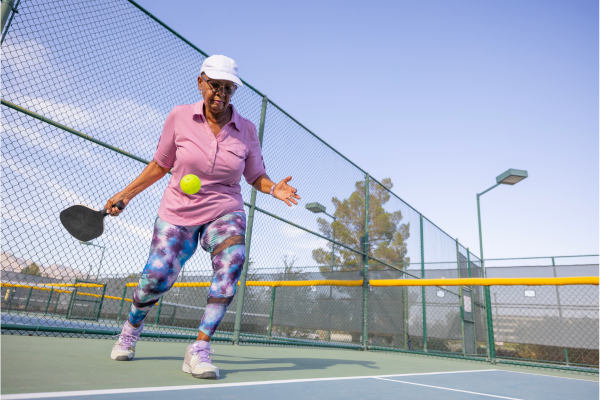
Frequently Asked Questions
What is the court size for Skinny Singles?
The court size for Skinny Singles is the same as regular Pickleball, measuring 20 feet by 44 feet.
Can I use the kitchen area in Skinny Singles?
Yes, the kitchen area, also known as the non-volley zone, is still in play in Skinny Singles.
Are there any differences in the serving rules for Skinny Singles?
Yes, in Skinny Singles, the server must serve from a further back line, called the “deep court line,” and can only serve diagonally to the opposite court.
Can I hit the ball out of the air in Skinny Singles?
Yes, players are allowed to hit the ball out of the air in Skinny Singles, also known as an “air shot.”
Are there any restrictions on where I can stand during a serve in Skinny Singles?
Players must start behind the deep court line when serving in Skinny Singles, but can move anywhere on their side of the court once the ball is in play.
Is there a time limit for points in Skinny Singles?
Yes, players have 10 seconds between points to serve the ball in Skinny Singles, and the receiver must be ready to receive within this time limit as well.

